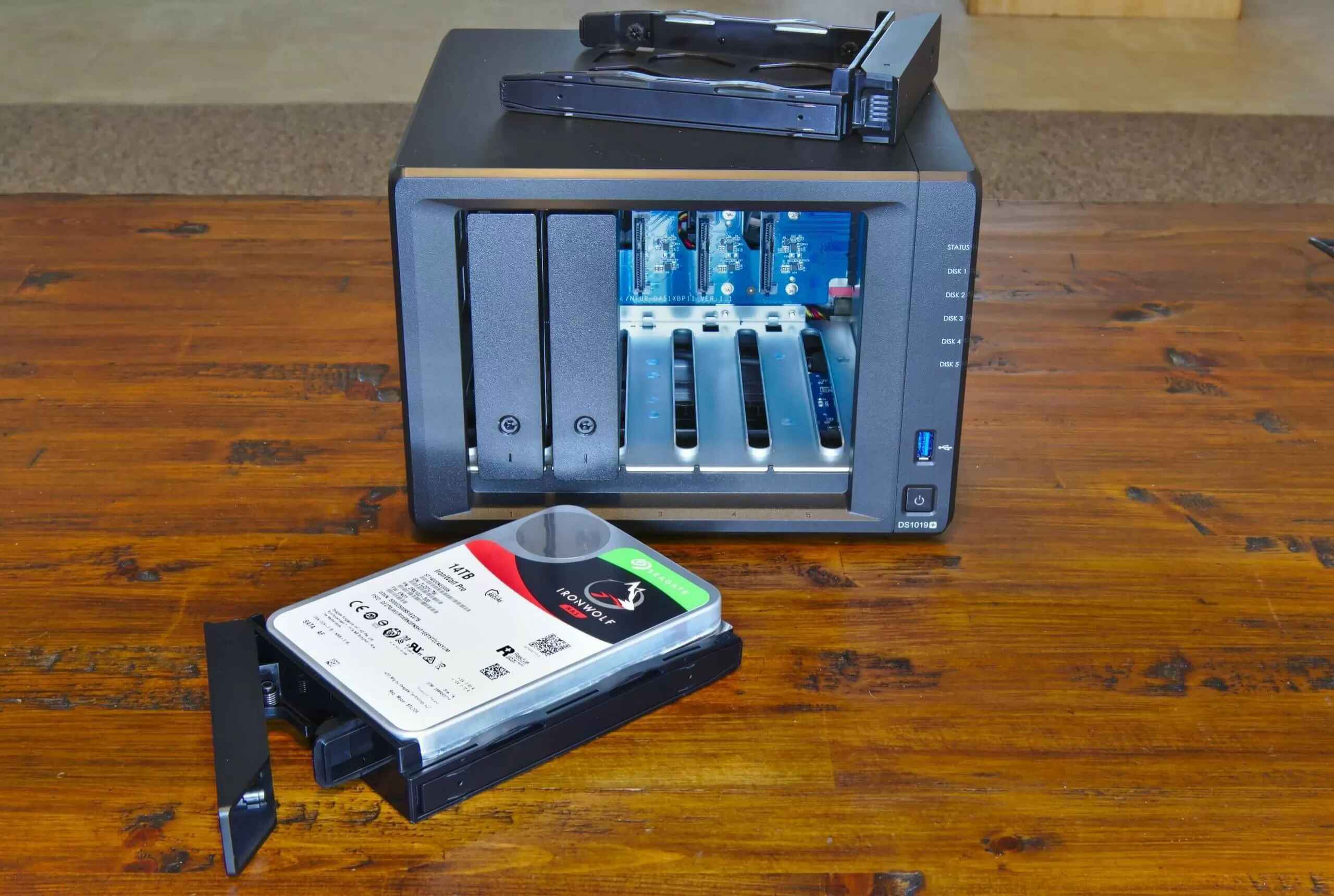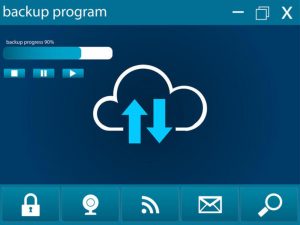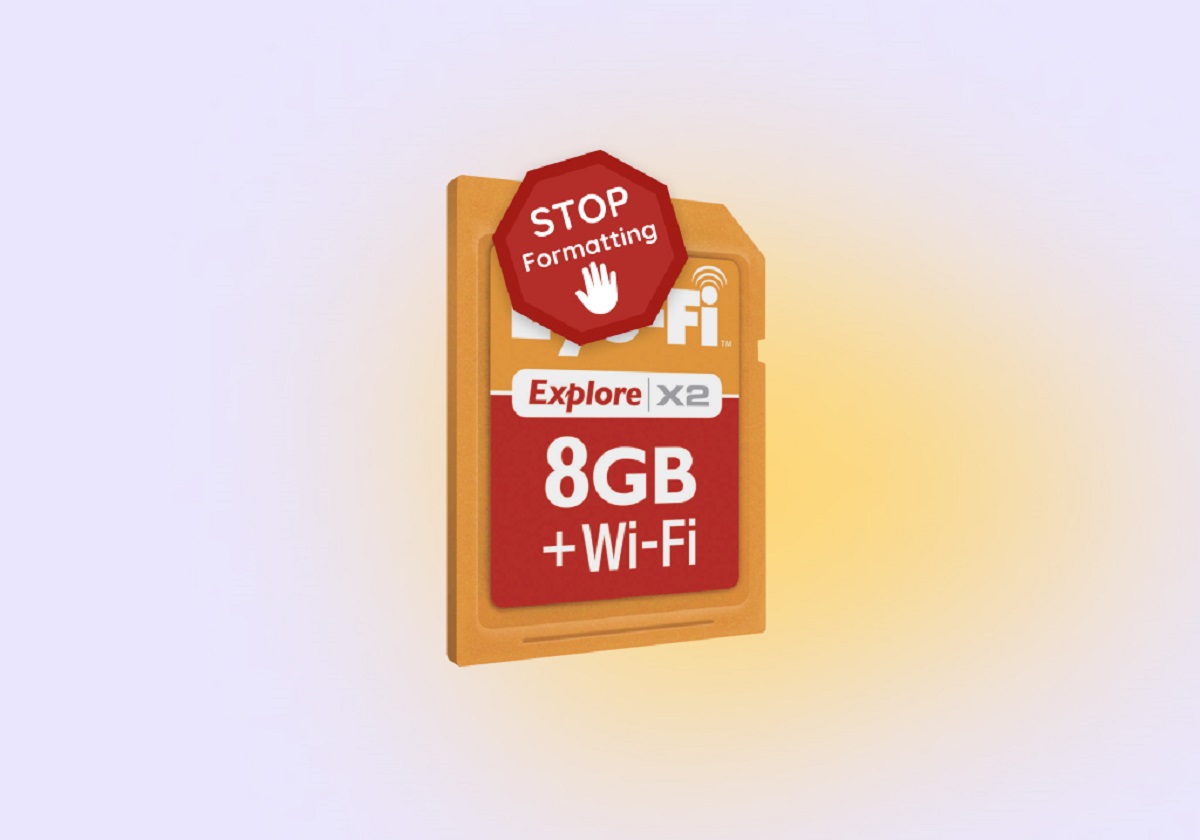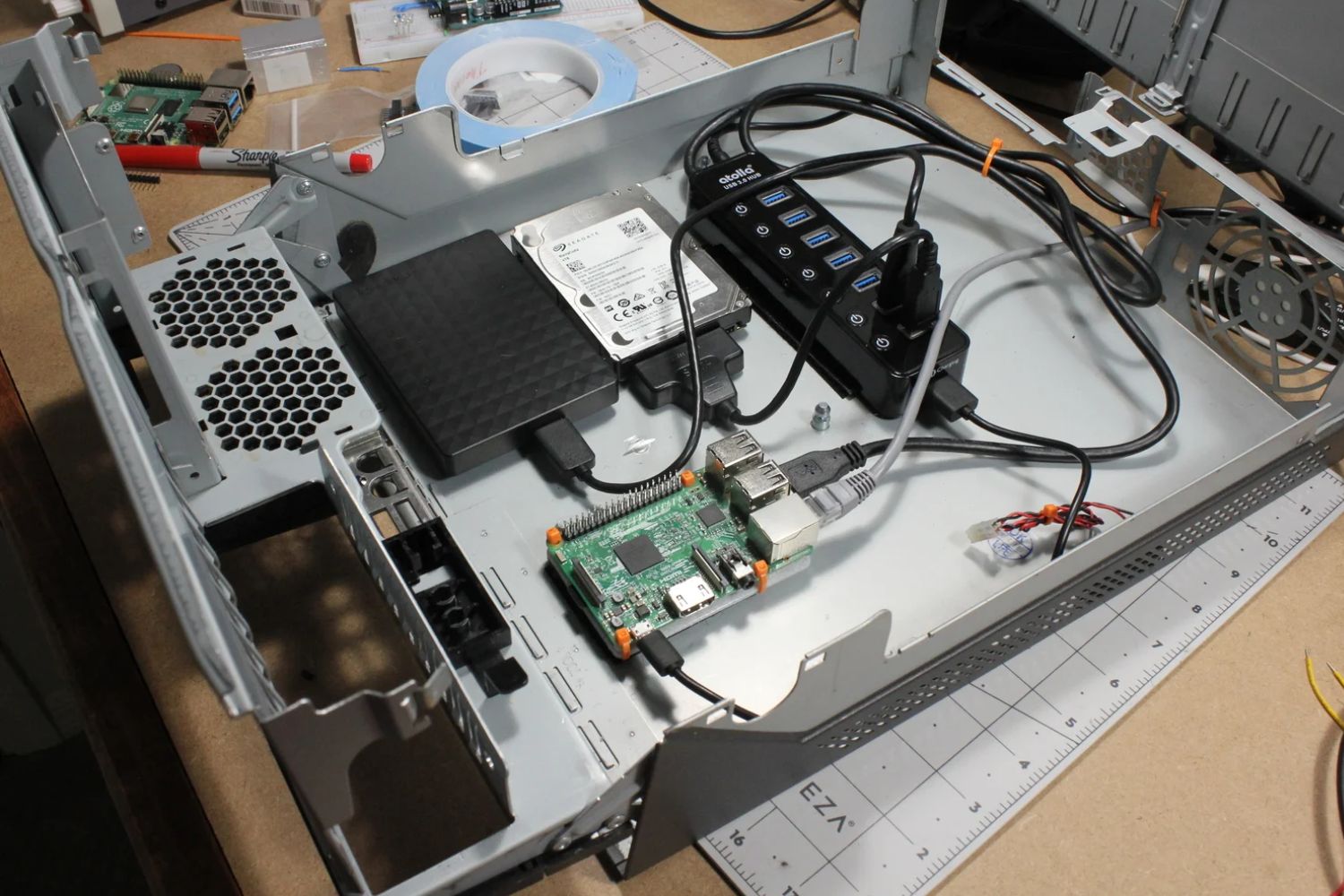Introduction
Welcome to the world of data recovery! In this guide, we will delve into the fascinating realm of utilizing Photorec on a Network Attached Storage (NAS) system. As we navigate through the intricacies of this process, you will gain valuable insights into the functionality of NAS and the capabilities of Photorec.
Data loss can be a distressing experience, especially when it involves vital information stored on a NAS device. However, with the aid of Photorec, a powerful data recovery tool, you can potentially retrieve lost files and breathe new life into seemingly inaccessible data.
Throughout this guide, we will explore the fundamental concepts of NAS, providing a comprehensive understanding of its role in storing and managing data. Additionally, we will unravel the intricacies of Photorec, shedding light on its remarkable ability to recover lost files from various storage devices, including NAS.
By the end of this journey, you will be equipped with the knowledge and skills necessary to install and utilize Photorec on your NAS, empowering you to embark on the data recovery process with confidence and proficiency. Get ready to unlock the potential of your NAS and harness the formidable capabilities of Photorec to reclaim your valuable data. Let's embark on this enlightening expedition into the realm of data recovery with Photorec on NAS.
What is Network Attached Storage (NAS)?
Network Attached Storage, commonly referred to as NAS, is a dedicated file storage device that provides local area network (LAN) nodes with file-based data storage services through a standard Ethernet connection. NAS systems are designed to facilitate file sharing and data management within a networked environment, offering a centralized storage solution for various types of data, including documents, multimedia files, and application data.
Unlike traditional file servers, NAS devices are typically configured with a simplified operating system and are optimized for file storage and retrieval. These devices are equipped with multiple hard drives, allowing for data redundancy and enhanced performance through RAID (Redundant Array of Independent Disks) configurations. NAS systems can be tailored to meet the specific storage requirements of individuals, small businesses, and large enterprises, offering scalable solutions to accommodate growing data needs.
One of the key advantages of NAS is its accessibility and ease of use. Users can access files stored on a NAS device from multiple devices and operating systems, making it a versatile and convenient storage solution for homes and businesses. Additionally, NAS devices often feature built-in data protection mechanisms, such as automated backups and data mirroring, to safeguard against data loss and ensure data integrity.
Furthermore, NAS devices can serve additional functions beyond basic file storage, including media streaming, remote access, and hosting of applications and services. This versatility makes NAS an indispensable tool for modern data management and collaborative work environments.
As we delve deeper into the realm of data recovery with Photorec on NAS, understanding the fundamental principles and capabilities of NAS will provide a solid foundation for harnessing the full potential of this storage technology.
Understanding Photorec
Photorec is a powerful open-source software designed to recover lost files from storage devices, including hard disks, SSDs, memory cards, and NAS systems. Developed by CGSecurity, Photorec is renowned for its ability to retrieve a wide range of file formats, making it an invaluable tool for data recovery in diverse scenarios.
Unlike traditional data recovery software, Photorec operates at a low level, bypassing the file system and directly scanning the underlying data to identify and reconstruct lost files. This approach enables Photorec to recover files even from damaged or formatted storage devices, offering a higher likelihood of successful data retrieval in challenging situations.
Photorec is equipped with advanced algorithms that analyze the raw data on a storage device, searching for file signatures and structures to identify and extract recoverable files. This method allows Photorec to recover files with precision, regardless of the file system or operating system used to store the data.
One of the standout features of Photorec is its support for a vast array of file formats, including documents, archives, multimedia files, and more. Whether it’s a lost photo, a deleted document, or a corrupted video file, Photorec is capable of recognizing and recovering a diverse range of file types, making it a versatile solution for comprehensive data recovery needs.
Furthermore, Photorec is designed with user-friendliness in mind, featuring a command-line interface and straightforward operation that caters to both novice and experienced users. Its cross-platform compatibility allows it to run on various operating systems, ensuring accessibility and flexibility for users across different platforms.
As we embark on the journey of using Photorec on NAS, understanding the inner workings and capabilities of this remarkable software will empower us to leverage its potential for recovering lost files from NAS systems with precision and efficiency.
Installing Photorec on NAS
Before utilizing Photorec to recover files from a Network Attached Storage (NAS) system, it is essential to install the software on the NAS device. While NAS devices vary in terms of their operating systems and capabilities, the process of installing Photorec typically involves accessing the NAS interface and implementing the necessary steps to deploy the software.
As NAS systems often run on specialized operating systems, such as FreeNAS, QNAP QTS, or Synology DiskStation Manager, the installation process may differ based on the specific NAS platform being used. It is important to consult the documentation and resources provided by the NAS manufacturer to determine the compatibility and installation procedures for Photorec on the respective NAS device.
For NAS devices that support the installation of third-party software or applications, users can explore the available repositories or app stores provided by the NAS manufacturer to locate and install Photorec. In some cases, NAS devices may offer a command-line interface or package management system that enables users to install additional software, including data recovery tools like Photorec.
Alternatively, users with advanced technical proficiency may opt to install Photorec manually on their NAS device by accessing the device’s shell or command-line interface. This method involves downloading the appropriate version of Photorec for the NAS platform and following the installation instructions provided by the software developer.
It is important to note that the installation of Photorec on a NAS device should be approached with caution, ensuring compatibility and adherence to the guidelines specified by the NAS manufacturer. Additionally, users should consider the storage capacity and performance capabilities of their NAS device to facilitate efficient data recovery operations using Photorec.
By successfully installing Photorec on the NAS, users can harness the full potential of this versatile data recovery tool to retrieve lost files from the NAS system, contributing to the seamless integration of data recovery capabilities within the NAS environment.
Using Photorec to Recover Files from NAS
Once Photorec is installed on the Network Attached Storage (NAS) device, users can leverage its robust data recovery capabilities to retrieve lost files from the NAS system. The process of using Photorec on NAS involves initiating the software, selecting the target storage device, and executing the recovery procedure to scan for and recover lost files.
To begin the data recovery process, users can access the NAS interface or connect to the NAS device via a terminal or command-line interface, depending on the specific NAS platform and installation method. Upon launching Photorec, users are presented with a straightforward interface that guides them through the recovery process, allowing them to specify the target storage device, configure recovery options, and initiate the scan for lost files.
Photorec employs a systematic approach to data recovery, utilizing advanced algorithms to analyze the storage device and identify recoverable files based on their signatures and data structures. The software conducts a thorough scan of the NAS system, meticulously examining the underlying data to locate and extract lost files, regardless of the file system or storage medium used.
During the recovery process, users have the flexibility to define specific file formats or categories to target for recovery, enabling them to focus on retrieving files of particular importance or relevance. Photorec’s comprehensive file format support ensures that a wide range of file types, including documents, photos, videos, and archives, can be recovered from the NAS system with precision.
Upon completion of the scan, Photorec presents users with a detailed report of the recoverable files found on the NAS device, allowing them to review and select the files for recovery. Users can specify the destination for the recovered files, ensuring that the recovered data is safely stored on a separate storage device to prevent overwriting or data corruption.
By utilizing Photorec to recover files from NAS, users can effectively restore lost data and mitigate the impact of data loss events on their NAS system. The seamless integration of Photorec’s data recovery capabilities with the NAS environment empowers users to regain access to valuable files and maintain the integrity of their data storage infrastructure.
Tips for Using Photorec on NAS
When utilizing Photorec for data recovery on a Network Attached Storage (NAS) system, it is beneficial to consider several tips and best practices to optimize the recovery process and maximize the chances of successful file retrieval.
- Backup NAS Data: Before initiating the data recovery process with Photorec, it is advisable to create a backup of the NAS data to safeguard against any unforeseen complications during the recovery operation. This precautionary measure ensures that the original data remains intact, providing an additional layer of protection.
- Verify NAS Compatibility: Ensure that the version of Photorec installed on the NAS device is compatible with the specific NAS platform and operating system. Verifying compatibility helps prevent potential conflicts and ensures the seamless operation of the data recovery software within the NAS environment.
- Understand File Recovery Options: Familiarize yourself with the file recovery options offered by Photorec, including the ability to specify file formats, customize recovery settings, and manage recovered files. Understanding these options enables users to tailor the recovery process to their specific needs and preferences.
- Allocate Sufficient Storage Space: When recovering files from a NAS system using Photorec, allocate sufficient storage space on an external device to store the recovered files. This proactive approach prevents data overwrites and facilitates the secure storage of the recovered data without impacting the NAS storage capacity.
- Regularly Update Photorec: Stay informed about updates and new releases of Photorec to ensure that the software remains equipped with the latest features, enhancements, and compatibility improvements. Regular updates can enhance the performance and reliability of Photorec for NAS data recovery.
- Seek Professional Assistance: In complex data loss scenarios or when dealing with critical data stored on the NAS, consider seeking professional assistance from data recovery experts who specialize in NAS systems. Professional expertise can provide valuable insights and solutions for challenging data recovery situations.
By adhering to these tips and recommendations, users can navigate the process of using Photorec on NAS with confidence and efficiency, enhancing the likelihood of successful data recovery while preserving the integrity of the NAS environment.
Conclusion
Embarking on the journey of utilizing Photorec on a Network Attached Storage (NAS) system opens doors to a realm of possibilities in data recovery. With a solid understanding of NAS functionality and the capabilities of Photorec, users can navigate the process of recovering lost files from a NAS environment with confidence and precision.
Network Attached Storage serves as a cornerstone of modern data management, offering centralized storage, file sharing, and data protection within networked environments. Its versatility and accessibility make it a valuable asset for individuals and organizations seeking reliable data storage solutions.
Photorec, on the other hand, stands as a beacon of hope in the face of data loss, employing advanced algorithms and file recovery techniques to retrieve a diverse range of file formats from storage devices, including NAS systems. Its user-friendly interface and cross-platform compatibility make it a versatile tool for data recovery enthusiasts and professionals alike.
By installing and using Photorec on NAS, users can harness the formidable capabilities of this software to recover lost files with precision, regardless of the underlying file system or storage medium. The seamless integration of Photorec with the NAS environment empowers users to address data loss events and restore valuable files, contributing to the resilience and integrity of their data storage infrastructure.
As users navigate the intricacies of data recovery with Photorec on NAS, adhering to best practices and leveraging the tips provided can enhance the efficiency and success of the recovery process. From verifying NAS compatibility to allocating sufficient storage space for recovered files, these tips serve as valuable guidelines for optimizing the data recovery experience.
In conclusion, the synergy between NAS and Photorec exemplifies the convergence of robust data storage and reliable data recovery, fostering a holistic approach to data management and resilience. By embracing the potential of Photorec on NAS, users can transcend the challenges of data loss and embark on a journey of restoring and preserving their valuable data assets within the NAS environment.

























